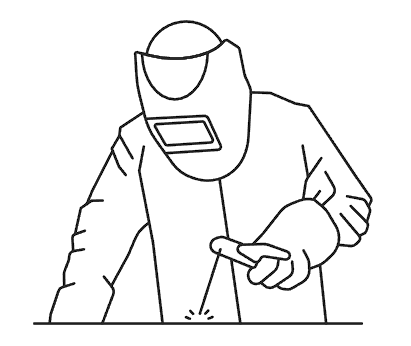Welder
We’ve all seen a welder. But what does it take to heat metal and melt it together? Welding is an essential process in the manufacturing industry. It involves the use of heat and pressure to fuse metals together, creating a strong bond. Welders are the professionals responsible for this task. In Australia, the welding industry is thriving, and the demand for skilled welders is high.
1 Different Types of Welders
In Australia, there are different types of welders, including MIG (metal inert gas) welders, TIG (tungsten inert gas) welders, and stick welders. MIG welders use a wire electrode to create the arc, while TIG welders use a tungsten electrode. Stick welders use a consumable electrode coated in flux. Each type of welding has its advantages and disadvantages, and the type of welding used depends on the application.

2 Market Forecast for Welders in Australia
According to Weld Australia, Australia is expected to have a deficit of about 70,000 welders by 2030, signaling a rapid increase in demand for welders in the coming years. This is partly due to the increasing renewable energy sector which will need thousands of welders for the manufacturing of wind turbines, solar panels and confounding projects.

3 Unemployment Rate and Average Salaries
While there are no clear numbers for unemployment rates, the government classifies the unemployment rate for welders as below average, signaling a high employment rate in the industry. The salary of a welder depends on the level of qualifications and experience, but according to the Australian government the median salary for welders and metal fabricators is $90,000, higher than the $82,000 median salary for all jobs.

4 Workplace Safety
To be a welder one needs to be careful and cool-headed, because welding includes different work hazards, such as poor equipment handling which can result in hearing and vision damage and material-related hazards, like fumes from the material and gas used in the process.

5 Share of full-time workers
While the whole Australian workforce average share of workers who work full-time is 66%, for welders it is 91%, signaling a steady workload and abundance of necessary work.

Main Certificates
To work as a welder in Australia, one must obtain a Certificate III in Engineering – Fabrication Trade. There are also various other welding certifications available, such as the Weld Australia Welder Certification Scheme and the American Welding Society Certification.
Some of the new technologies and methods used in welding are laser welding, friction-stir welding, electron beam welding and plasma welding. Compared to traditional techniques, these newer techniques offer greater precision and accuracy, improved weld quality, higher productivity which results in higher output, reduced heat input and greater variety of weldable materials.




